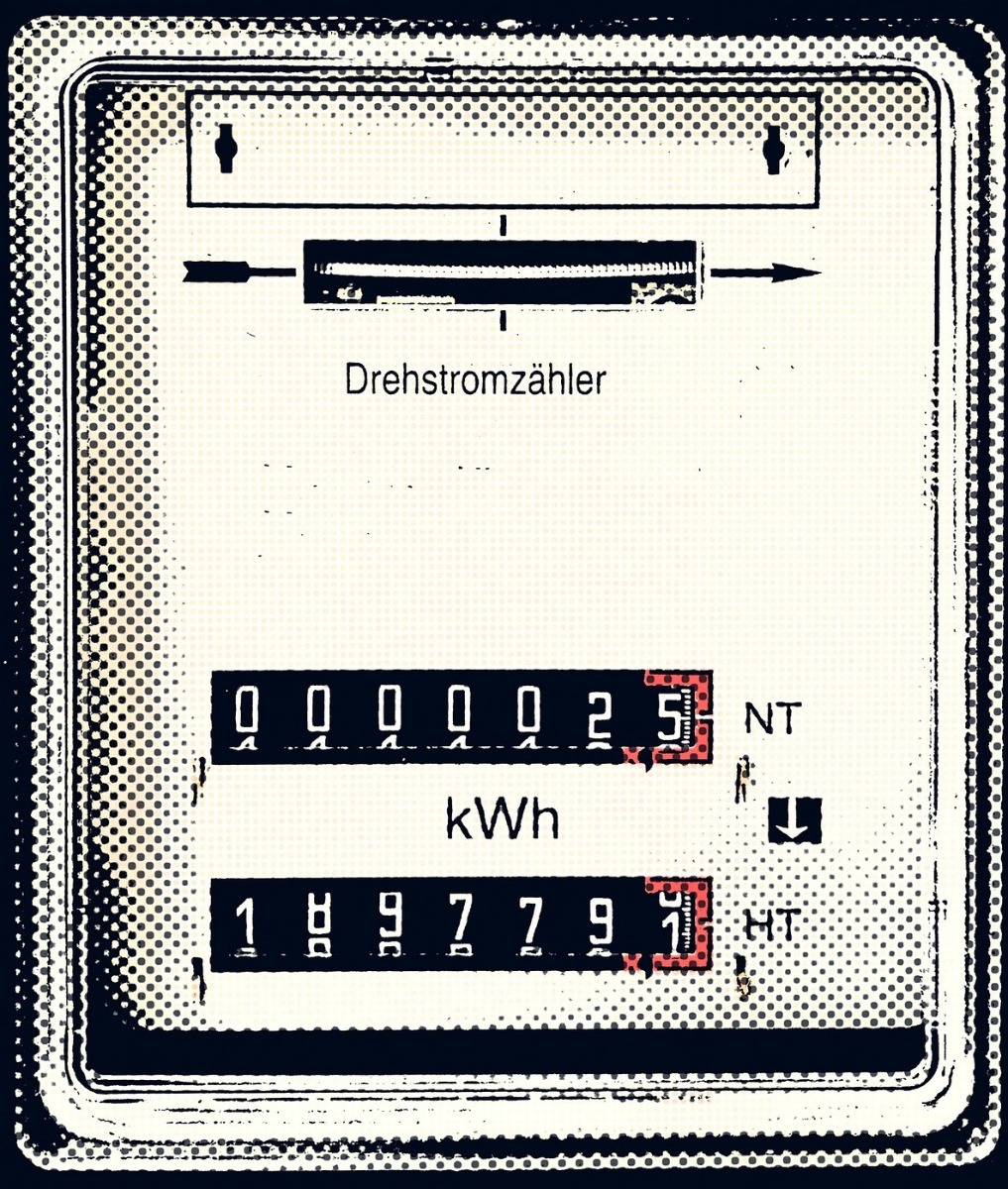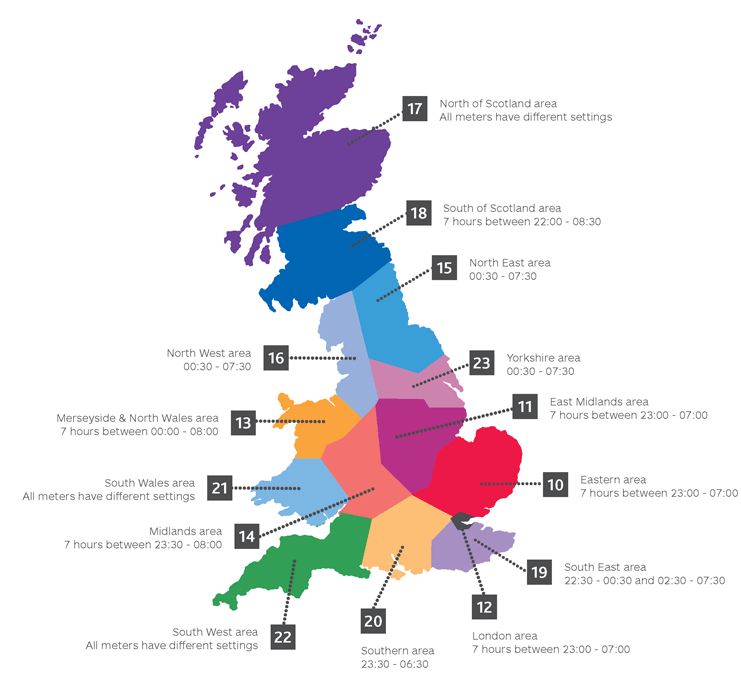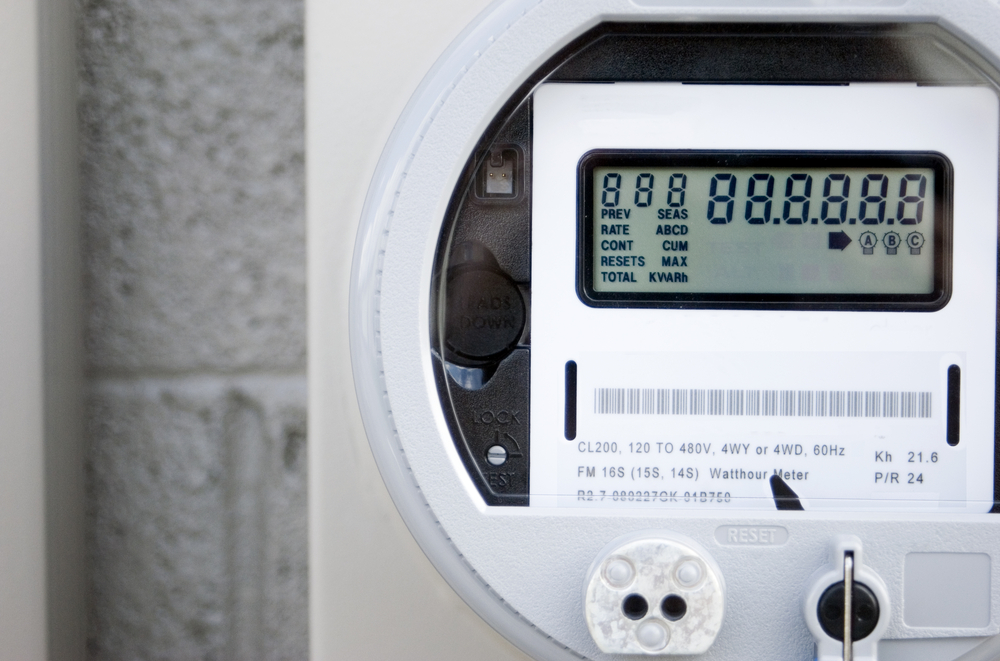 If you use storage heaters to heat your home, chances are you’re already on an Economy 7 tariff. This tariff is designed to make it more affordable to heat with electricity, and is intended to work in tandem with a night storage heating system. However, when used with other forms of electric heating, an Economy 7 tariff can inflate your heating bills unnecessarily. Here’s everything you need to know about Economy 7 – including how to get the most from your system if you’re on the tariff, and when you might want to look for another deal from your supplier.
If you use storage heaters to heat your home, chances are you’re already on an Economy 7 tariff. This tariff is designed to make it more affordable to heat with electricity, and is intended to work in tandem with a night storage heating system. However, when used with other forms of electric heating, an Economy 7 tariff can inflate your heating bills unnecessarily. Here’s everything you need to know about Economy 7 – including how to get the most from your system if you’re on the tariff, and when you might want to look for another deal from your supplier.
What exactly is an Economy 7 tariff and how does it work?
Economy 7 is a particular type of electricity tariff that is usually installed in homes without gas central heating. This tariff gives the occupant cheaper electricity at certain times of the day, usually overnight and for seven hours, hence the number seven. This tariff uses a different type of electricity meter, which is usually the first sign that you are in an Economy 7 house. The meter will have two separate readings, one for ‘on peak’ or daytime energy, and one for ‘off peak’ or overnight usage. The meter switches automatically from on to off peak at certain times of the day, altering the amount you are paying for your energy.
The reason Economy 7 was developed was to encourage people to use more electricity overnight, when power stations continue to produce energy but there is much less demand on the grid. Night storage heaters were designed to take advantage of the Economy 7 offer, using cheaper overnight electricity to charge up the unit and releasing heat throughout the day. If you use night storage heaters but are not on Economy 7, you could be paying too much for your heating. Talk to your energy supplier about switching to Economy 7 to see if you can save money. Equally if you are on Economy 7 but are not using storage heaters, you may be able to save money by switching to a different tariff – but we’ll come to that later.
How do I know if I'm on Economy 7?
 If you’ve recently moved into a new property and are unsure what sort of tariff you are on, there are a few tell-tale signs to look out for to see if you are on Economy 7.
If you’ve recently moved into a new property and are unsure what sort of tariff you are on, there are a few tell-tale signs to look out for to see if you are on Economy 7.
● Check your meter: As a general rule, meters for Economy 7 will have two separate readings, one which is marked ‘normal’ and one which is ‘low’. However, there are many different types of meters out there, so sometimes it’s not all that easy to tell at first glance
● Check your bill: If you have an old bill to hand, you should be able to see two different rates listed on the charges if you’re on an Economy 7 tariff. You can also look for the MPAN (meter point access number) which is usually included on your bill, and which will begin with 02 if you are on the Economy 7 tariff
● Ask your supplier: If you really can’t figure out if you are on Economy 7 or not, the sure fire way to get the answer is by asking your own supplier directly
Once you’re sure your home is definitely on Economy 7, you can start to make decisions about how to make the most of this interesting tariff.
Saving money on Economy 7
 If you are on the Economy 7 tariff and have never used it before, it’s worth getting to know how it works and how you can maximise the savings available. The seven off peak hours are usually overnight, but could occur at any time between 11pm and 7am. Your energy supplier may be able to tell you more accurately which hours are billed at the lower rate, but in many cases even they can’t be certain.
If you are on the Economy 7 tariff and have never used it before, it’s worth getting to know how it works and how you can maximise the savings available. The seven off peak hours are usually overnight, but could occur at any time between 11pm and 7am. Your energy supplier may be able to tell you more accurately which hours are billed at the lower rate, but in many cases even they can’t be certain.
What you can be sure of is that between 7am and 11pm, your electricity will actually cost more than most other tariffs would charge you. For this reason, it is a good idea to reduce energy usage in the day as much as possible, and to invest in some timers for the overnight ‘off peak’ period. Putting things like your washing machine, dishwasher and tumble dryer on a timer to use the lower rate energy overnight can make a big difference to your bills.
Losing money on Economy 7?
Whilst Economy 7 does offer an opportunity for owners of storage heaters to save money, as a general rule of thumb it should be avoided like the plague if you use any other form of home heating. If you don’t use much electricity overnight you have little to be gained from the cheaper overnight rates, whilst any electricity you use during the day will be charged at an inflated rate. Homeowners who use other forms of electric heating – such as electric radiators, electric towel rails or infrared panels – actually have most to lose from an Economy 7, so it’s very important to challenge the misconception that Economy 7 and electric heating go hand in hand. Electric radiators use energy whenever they are in use, which will be charged at the higher daytime rate if used on an Economy 7 tariff.
As an interesting side note, if you do use storage heaters on an Economy 7 tariff, you may find that you can actually save money by switching to electric radiators on a standard tariff. This is because electric radiators are so energy efficient – through the use of high precision thermostats, fast-acting heat elements and 24/7 programmers – that they use much less energy than storage heaters, and can cost less to run even on higher rate electricity.

Connecting and disconnecting
If you would like to be on Economy 7 but currently are not, you should still be able to access the tariff by talking to your energy supplier. If your current supplier does not offer it, shopping around will uncover other suppliers who do.
If connecting to Economy 7 requires a meter change, you may be asked to pay something towards the connection costs. Similarly, if you are currently on Economy 7 but would like to go onto a standard tariff, you may be charged for the meter swap. However, you can switch fuel supplier to get a better deal whenever you like, and at no cost to yourself.
It is hoped that, once the current smart meter rollout has taken place, there will be more tariffs like Economy 7 offered to households across the UK. Fuel suppliers are keen to develop new and innovative tariffs which meet the needs and behaviour patterns of their customers even better, so keep your eyes open for more flexible tariffs coming soon...
If you're looking to replace your storage heaters, view our full range of electric radiators below - offering an efficient alternative that can be used on a regular energy tariff.
Image Sources:
Banner image by Gerd Altmann from Pixabay






